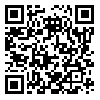BibTeX | RIS | EndNote | Medlars | ProCite | Reference Manager | RefWorks
Send citation to:
URL: http://journal.zums.ac.ir/article-1-1224-en.html
2- Dept. of Health Promotion and Education, Isfahan University of Medical Sciences, Isfahan, Iran ,
3- Dept. of Statistics, Isfahan Medical University, Isfahan, Iran.
Background and Objective: High prevalence of dental disease in children is one of the essential reasons for oral health education. Use of right and correct educational pattern is a new way in health service field. The aim of this study was to determine the effect of oral health education based on health belief model for preventing carries and dental plaque on mothers who had 3-6 year old children. Materials and Methods: This quasi-experimental research was carried out on 56 mothers who had 3-6 year old children (28 women in control group and 28 in experimental group) in No 1 health center of Zanjan. The training was based on health belief model and certain behavior goals for about 60 minutes in 3 sessions. Mothers' functions were evaluated based on helping to brush the children's teeth and the number of brushing at zero and one month after the intervention time points. Finally, dental plaque was assessed based on Navy dental plaque index. Data was collected once in the first stage (before the intervention) and then in the second stage (after the intervention). Results: Mean score of all parts of health belief model in experimental group after educational intervention compared to before the intervention was increased significantly and also the mean score of all parts of health belief model was significantly increased after the intervention in experimental group comparing to control group. Conclusion: The results of this survey showed that by increasing the score of health belief model parts including perceived susceptibility, perceived severity, perceived benefits and perceived barriers, the preventive actions of oral health is also increasing. Therefore, results of this survey confirm the efficacy of health belief model in education of oral health.
Received: 2010/08/31 | Accepted: 2014/06/23 | Published: 2014/06/23
| Rights and permissions | |
 |
This work is licensed under a Creative Commons Attribution-NonCommercial 4.0 International License. |




